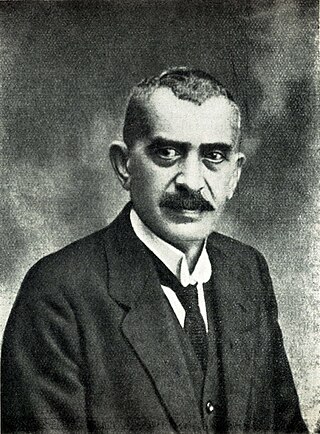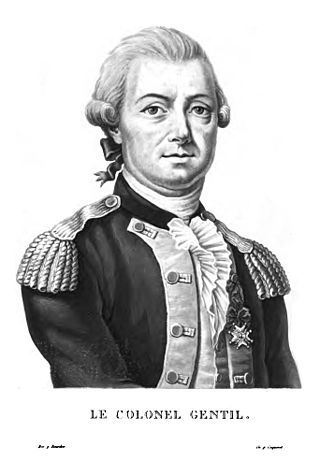Related Research Articles

The association of Armenians with India and the presence of Armenians in India are very old, and there has been a mutual economic and cultural association of Armenians with India.

New Julfa is the Armenian quarter of Isfahan, Iran, located along the south bank of the Zayanderud.
Mesrob or Mesrop is an Armenian given name.
Alexander Raphael was a British politician who was the first British-Armenian to serve in the House of Commons. He was returned as a Whig MP from the Irish constituency of County Carlow, at a by-election in June 1835. However the election was challenged on petition and he was unseated on 19 August 1835. Raphael succeeded in re-entering the House of Commons as a Catholic Whig from St Albans in 1847 and retained the seat until his death. Prior to serving in Parliament, he had been Sheriff of London for 1834, where he lost the tip of his left index finger in a fight with a criminal. His father was Edward Raphael who was one of the founders of the Carniac Bank in Madras, India, which opened its doors in 1788.
Armenian College and Philanthropic Academy (ACPA) is an Armenian school in Kolkata, India. As of 2015, it is the sole Armenian-centred school in the eastern section of the world, and has been so throughout its history. It is commonly known and called Armenian College.
George Manook ;, an Armenian merchant of Java, was among the richest figures in the Dutch East Indies, and on several occasions lent large sums of money to the Dutch government. He left behind a fortune of five million guilders when he died.

The Bourbons of India are an Indian family who claim to be legitimate heirs of the House of Bourbon, descended from Jean Philippe de Bourbon, Count of Clermont-en-Beauvaisis, an exiled French noble who served in Mughal Emperor Akbar's court. The family is also known as the House of Bourbon-Bhopal, a name derived from the city of Bhopal in central India where their last few generations resided and worked in the pre-independent Indian Bhopal State Royal Court.

Mesrovb Jacob Seth was an Armenian author, historian and educator in Calcutta. He was examiner of Modern and Classical Armenian at the University of Calcutta. He is best known for his writings on the history of Armenians in India.
The Armenians in Pakistan are ethnic Armenians living in the present country of Pakistan. Armenians migrated to Karachi during the economic boom in the early 20th century. Notable Armenian settlements in Pakistan can be found in the cities of Karachi, Lahore and in the capital Islamabad.

Azdarar was the first Armenian language newspaper ever published. It was established on October 16, 1794, in the city of Madras in India by Father Harutyun Shmavonyan. It is also the first non-English newspaper to be published in India. The monthly covered mainly cultural and historical issues.
There was a small community of Armenians centered in Kabul, Afghanistan.

Sir Apcar Alexander Apcar was a wealthy Armenian businessman in Calcutta, India. His family had made their fortune in the opium trade with China. He was president of the Bengal Chamber of Commerce, sat on the Imperial Legislative Council, and in 1903 was knighted. He owned a racehorse stud, and for several years was the leading figure in the Indian racing world.
The Armenian community of the United Kingdom consists mainly of British citizens who are fully or partially of Armenian descent. There has been sporadic emigration from Armenia to the UK since the 18th century, with the biggest influx coming after the Second World War. The majority are based in the major cities of London and Manchester. The 2001 UK Census recorded 589 Armenian-born people living in the UK, and in 2013, the Office for National Statistics estimated that there were 1,235 people born in Armenia resident in the UK, with the number of Armenian nationals being 1,720, although it has been estimated by the Armenian Diaspora Conference that there are up to 18,000 ethnic Armenians including those who are British-born, and of part Armenian descent, living in the UK.

Jean Baptiste Joseph Gentil (1726-1799) was a French Army Colonel, Knight of the Royal and Military Order of Saint-Louis, who worked in India. He is known for the collections he made of historic manuscripts and artifacts from India and for his cartography and documentation of Mughal history.

Joseph David Beglar, or Joseph David Freedone Melik Beglar (1845–1907), was an Armenian-Indian engineer, archaeologist and photographer working in British India and reporting to the Archaeological Survey of India, known for his images of temples and religious art. He was an assistant of Alexander Cunningham.
Lady Juliana was a woman who lived at the court of Mughal emperor Akbar. She is said to have been the physician in charge of Akbar's royal harem, and to have married the legendary Bourbon prince Jean-Philippe de Bourbon-Navarre, and to have been the sister of one of Akbar's wives. She is credited with building the first church in Agra.
Mirza Zulqarnain or Mirza Zul-Qarnain was a diwan and faujdar of Armenian descent in the court of the Mughal Empire.
Sikandar Mirza was an Armenian merchant who travelled from Aleppo to Lahore and became a trusted figure within Akbar's court in the Mughal Empire.
Herbert Michael Shircore, CIE was an Armenian businessman and former Chairman of Narayanganj municipality.

Mesrop Davtian Taghiadian or Taghiadiants was a nineteenth-century Armenian writer, educator and journalist. He wrote prolifically in Classical Armenian and is regarded as one of the first Armenian authors of the Romantic movement, as well as one of the earliest modern Armenian fiction writers.
References
- ↑ Seth, Mesrovb Jacob. (2005). Armenians in India, from the Earliest Times to the Present Day: A Work of Original Research. New Delhi: Asian Educational Services. p. 2. ISBN 81-206-0812-7.
- ↑ Seth, p. 93.
- ↑ Not to be confused with Lady Juliana of Agra